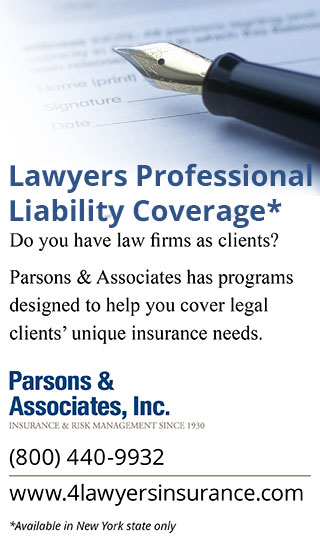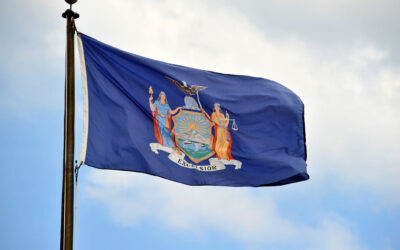A recurring theme throughout the seven Harry Potter books and eight movies is that Hogwarts, the school for young wizards in the United Kingdom, is a very dangerous place. From the straightforward dangers that come with potions and Quidditch to the more frightening risks of Dementors, the entire Triwizard Tournament, and the ongoing threat of He-Who-Must-Not-Be-Named—Hogwarts poses a surprisingly high level of danger for 11- to 18-year-old students. Even student punishments have an element of danger, including a trip to the Forbidden Forest to investigate the crime of killing unicorns.
So, how would you insure a school with such a range of risks? While the likelihood of actual Dementors trying to take a student’s soul should not be high on the list of risks facing American students, many similar dangers do create risks and potential exposures for school districts across the country. Rather than talk about real schools, let’s use Hogwarts to examine certain considerations for insuring American schools from student injuries, angry parents, and outside risks.
Alleged discrimination
For Harry and the readers, the Sorting Hat has a starring role in the introduction to Hogwarts. Harry and the other first-year students arrive at school to be sorted into houses immediately based on an expert hat’s determination of which house they would best fit. The basics come from the house system common in British schools, which sorts students for purposes of intra-school competitions and boarding when applicable. Additionally, Hogwarts houses are each associated with different traits and qualities. While Gryffindors are considered loyal, Slytherins are known as cunning and for becoming
dark wizards.[1]
Harry knew little about Hogwarts when he stepped up for his sorting, but he already knew he did not want to end up in Slytherin. When he made this clear to the Sorting Hat, the Sorting Hat assigns him to Gryffindor. Instead of living in a dungeon, Harry gets to live in a tower with his new best friend, Ron Weasley. He goes on to play Quidditch for Gryffindor and he spend most of his next six years at school with other Gryffindors. Throughout the book series, house membership becomes a short-hand for student characteristics with deviances noticeable (e.g., Cedric Diggory being a surprising leader from Hufflepuff).
The parents of Harry’s peers seemed to have no issues with the immediate stereotyping of their 11-year-olds by the Sorting Hat, but modern parents may have concerns. They may have raised their little witches or wizards with dreams of them being a brainy Ravenclaw only for the Sorting Hat to announce, “Hufflepuff!” Non-wizard parents (Muggles) may have their pride of having a wizard son erased upon learning he had been assigned to the evil house, Slytherin (and then been forced to live in a dungeon). That is only the start to the issues parents may have with Hogwarts’ attitudes toward student equality. Harry broke the rules only to end up on the Quidditch team—an opportunity no other first-year student received. Professors doled out punishments and awarded house points with such wild inconsistency that some students’ grumbles are wholly justified.
In many instances, unhappy parents talk to school administrators and work things out on their own. A student may not be reassigned from Slytherin, but the headmaster may convince his parents that the assignment confirms their child’s cunning resourcefulness along with assurances the dungeons are quite comfortable. Increasingly, parents have been unable to work through their issues with the school and file a lawsuit. Hogwarts may be a castle, but it still needs protection from such lawsuits.
A thorough general liability policy for schools should always include litigation defense costs. Schools cannot access this coverage to pre-emptively defend against a lawsuit, but as soon as the parents’ lawyer serves Hogwarts with the court filings—alleging the school discriminated against their darling witch by penalizing her repeatedly for no clear reason—Hogwarts can access the defense coverage. Ideally, Hogwarts would prepare for the inevitable parent lawsuit against the school, educators, and other staff by having a specialized general liability policy that specifically includes coverage for effectively everything going on at the school.
Hogwarts professors—intentionally or not—may pose just as much of a risk due to a wrong comment or intentional act. The liability policy specifically should include them or be complimented by an educators’ policy that ensures coverage. A key term to watch for is whether the insurance carrier selects the defense attorney or if the carrier reimburses the school for the attorney of its choosing. While general liability policies may not always be as extensive as the name suggests, the defense litigation costs may end up saving Hogwarts enough money to consider paying house elves for their labor.
Threats from outsiders
Throughout the Harry Potter series, the school faced the ongoing threat of Lord Voldemort or He-Who-Must-Not-Be-Named. The most-evil wizard to ever live, devoted his time to trying to kill Harry because of a prophecy. During Harry’s time at Hogwarts, Voldemort went to great lengths to try and breach the security of the school. He attempted to do so through a teacher, through another student, and then just breaching the defenses of the school. The consistent threat to Hogwarts and students created a real risk that the administration (Dumbledore, but really Professor McGonagall) would need to consider insurance to cover.
Whenever Hogwarts did come under attack, the school and its community did not have time to wait for someone to file a lawsuit to trigger coverage. This would quickly expose the gaps in coverage caused by exclusions in the general liability policy Hogwarts obtained to defend against angry parents filing lawsuits. To adequately protect the school, students, staff, and magical creatures in the event of an attack, Hogwarts would be advised to look at the UK wizarding community’s version of active-shooter insurance.
Generally, active-shooter policies are triggered as soon as a person commits a targeted attack on the property of the insured. If Hogwarts obtained such coverage by the seventh book’s Battle of Hogwarts, then coverage would have been triggered when the Death Eaters—Lord Voldemort’s followers—breached the defenses that had kept them from the Hogwarts grounds. They would not necessarily need to break through the only door to the school/castle for coverage to take effect.
The Battle of Hogwarts led to extensive damage to Hogwarts. While magic could help with some of the repairs, active-shooter policies also should include coverage for the nonphysical costs to address the extensive harm caused by an attack on a school. A thorough policy to provide Hogwarts and the wizarding community with the resources they need should include coverage for crisis management, counseling services, and funeral expenses. Hogwarts also should be wary of terrorism exclusions altogether.
No policy may cover all the risks posed to Hogwarts from outside attacks. For example, an active-shooter policy most likely would not have applied when the Triwizard Tournament, which ended with Harry and proud Hufflepuff Cedric Diggory being transported off school grounds. Yet, one of the most valuable aspects of an active-shooter policy is a security review that would help the school bolster its defenses. For schools looking to best protect themselves, the active-shooter policy’s value may come from the services available to do its best to minimize the risk of student harm. Hogwarts may only have one entry into the main building, but the risk assessment would likely have alerted the school that the Triwizard Tournament may have been an inadvisable idea for many reasons, such as bringing dragons onto the campus.
Conclusion
No amount of effort by Hogwarts’s administrators or their insurer can fully protect students from danger—after all, Hogwarts students learn how to disarm each other and play a sport that involves flying around on broomsticks. Like any school, Hogwarts still would need to continually reassess its insurance coverages to ensure the best defenses against litigious parents and outside threats.
This article originally appeared in the September 2022 issue of PIA Magazine.
[1] While not all Slytherins become dark wizards, no dark wizards have come from Gryffindor, Hufflepuff or Ravenclaw.

Clare Irvine, Esq.
Clare Irvine, Esq., graduated from Fordham University School of Law and Arizona State University.





